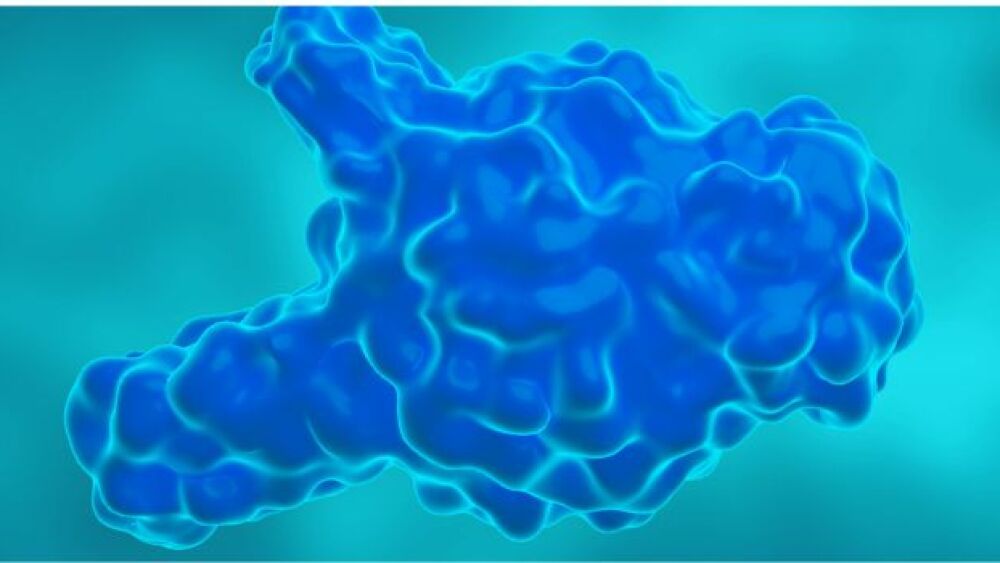SANTA CLARA, California, May 20 /PRNewswire/ -- The use of targeted nanoparticles offers promising techniques for cancer treatment. Researchers in the laboratory of Mark E. Davis at the California Institute of Technology have been using small interfering RNA (siRNA), sometimes known as silencing RNA, to "silence" specific genes that are implicated in certain malignancies. One of the primary challenges associated with this type of therapy is delivering the therapeutic agent into the body and then to the tumor in a safe and effective manner. By using targeted nanoparticles, researchers have demonstrated that systemically delivered siRNA can slow the growth of tumors in mice without eliciting the toxicities often associated with cancer therapies. The results of this research are being presented this week at the NSTI Nanotech 2007 Conference in Santa Clara, CA.
The Caltech researchers have incorporated siRNA into nanoparticles that are formed completely by self-assembly, characterized the behavior of these nanoparticles and studied their safety and efficacy in mice.
Using extensive physicochemical and biological characterization, the investigators are able to estimate the composition of individual nanoparticles and to correlate the nanoparticle structure with its biological function. This quantitative approach provides unique insights into the design of more effective nanoparticle carriers.
According to the lead author of the study, Derek W. Bartlett, "Safe and effective delivery remains perhaps the greatest impediment to the clinical realization of small interfering RNA (siRNA) in cancer therapy. Formation of siRNA nanoparticles using cyclodextrin-containing polycations is one of the most promising strategies for systemic siRNA delivery, and such nanoparticles are expected to enter Phase I clinical trials by late 2007. Our most recent work examines the impact of various dosing schedules and surface modifications on the efficacy of these siRNA nanoparticles in preclinical cancer models. By combining the experimental data with a mathematical model of siRNA-mediated gene silencing, we illustrate several practical considerations that we believe will be directly relevant to the clinical application of siRNA-based therapeutics in cancer therapy."
The presentation is "Characterization and in vivo efficacy of targeted nanoparticles for systemic siRNA delivery to tumors" by D.W. Bartlett and M.E. Davis, from the California Institute of Technology. It will be presented at the NSTI Nanotech 2007 conference in Santa Clara, CA on May 21, 2007, 4:40 PM, Great America 3, Santa Clara Convention Center.
The mission of Nanomedicine: Nanotechnology, Biology & Medicine, the international peer-reviewed journal published by Elsevier, is to communicate new nanotechnology findings, and encourage collaboration among the diverse disciplines represented in nanomedicine. Because this closely mirrors NSTI's charter to seek the "promotion and integration of nano and other advanced technologies through education, technology and business development," Elsevier is pleased to be working in collaboration with NSTI to bring this presentation to the attention of the scientific community.
Press Room - NSTI Nanotech 2007, May 20-24, 2007, Santa Clara, CA
Santa Clara Convention Center, Room 202
Contact Jami Walker at Jami.Walker@elsevier.com to arrange for an interview prior to or during the NSTI Nanotech 2007 Conference.
About The Nano Science and Technology Institute (NSTI)
The Nano Science and Technology Institute (NSTI; www.nsti.org) is chartered with the advancement and integration of nano and other advanced technologies through education, collaboration and research services. NSTI accomplishes this mission through its offerings of continuing education programs, conventions, scientific and business publishing and custom research services. NSTI produces the annual Nanotech 200x conference and trade show, the world's largest event to focus on nanoscience and nanotechnology, attracting more than 3,000 industrial, academic, business and governmental attendees from around the world. http://www.nsti.org/Nanotech2007/
About Nanomedicine: Nanotechnology, Biology & Medicine
Nanomedicine: Nanotechnology, Biology and Medicine (Nanomedicine) is a newly established, international, peer-reviewed journal published quarterly. Nanomedicine publishes basic, clinical, and engineering research in the innovative field of nanomedicine. Article categories include basic nanomedicine, diagnostic nanomedicine, experimental nanomedicine, clinical nanomedicine, and engineering nanomedicine, pharmacological nanomedicine. Nanomedicine will provide the latest information in this rapidly developing field, both in research and clinical applications. The Journal publishes original clinical and investigative studies, state-of-the art papers, reports on new equipment and techniques, review articles, and more. Nanomedicine is the official publication of the American Academy of Nanomedicine (AANM) and is indexed in MEDLINE/PubMed.
About Elsevier (www.elsevier.com)
Elsevier is a world-leading publisher of scientific, technical and Medical information products and services. Working in partnership with the Global science and health communities, Elsevier's 7,000 employees in over 70 Offices worldwide publish more than 2,000 journals and 1,900 new books per year, in addition to offering a suite of innovative electronic products, such as ScienceDirect (http://www.sciencedirect.com/), MD Consult ( http://www.mdconsult.com/), Scopus (http://www.info.scopus.com/), bibliographic databases, and online reference works.
Elsevier (http://www.elsevier.com/) is a global business headquartered in Amsterdam, The Netherlands and has offices worldwide. Elsevier is part of Reed Elsevier Group plc (http://www.reedelsevier.com/), a world-leading publisher and information provider. Operating in the science and medical, legal, education and business-to-business sectors, Reed Elsevier provides high-quality and flexible information solutions to users, with increasing emphasis on the Internet as a means of delivery. Reed Elsevier's ticker symbols are REN (Euronext Amsterdam), REL (London Stock Exchange), RUK and ENL (New York Stock Exchange).
Contact: Jami Walker Associate Publisher Nanomedicine: Nanotechnology, Biology & Medicine Published by Elsevier Tel: +1-314-579-3342 Jami.Walker@elsevier.com
Elsevier & The Nano Science and Technology Institute (NSTI)CONTACT: Contact: Jami Walker, Associate Publisher, Nanomedicine:Nanotechnology, Biology & Medicine, Published by Elsevier, Tel:+1-314-579-3342, Jami.Walker@elsevier.com




